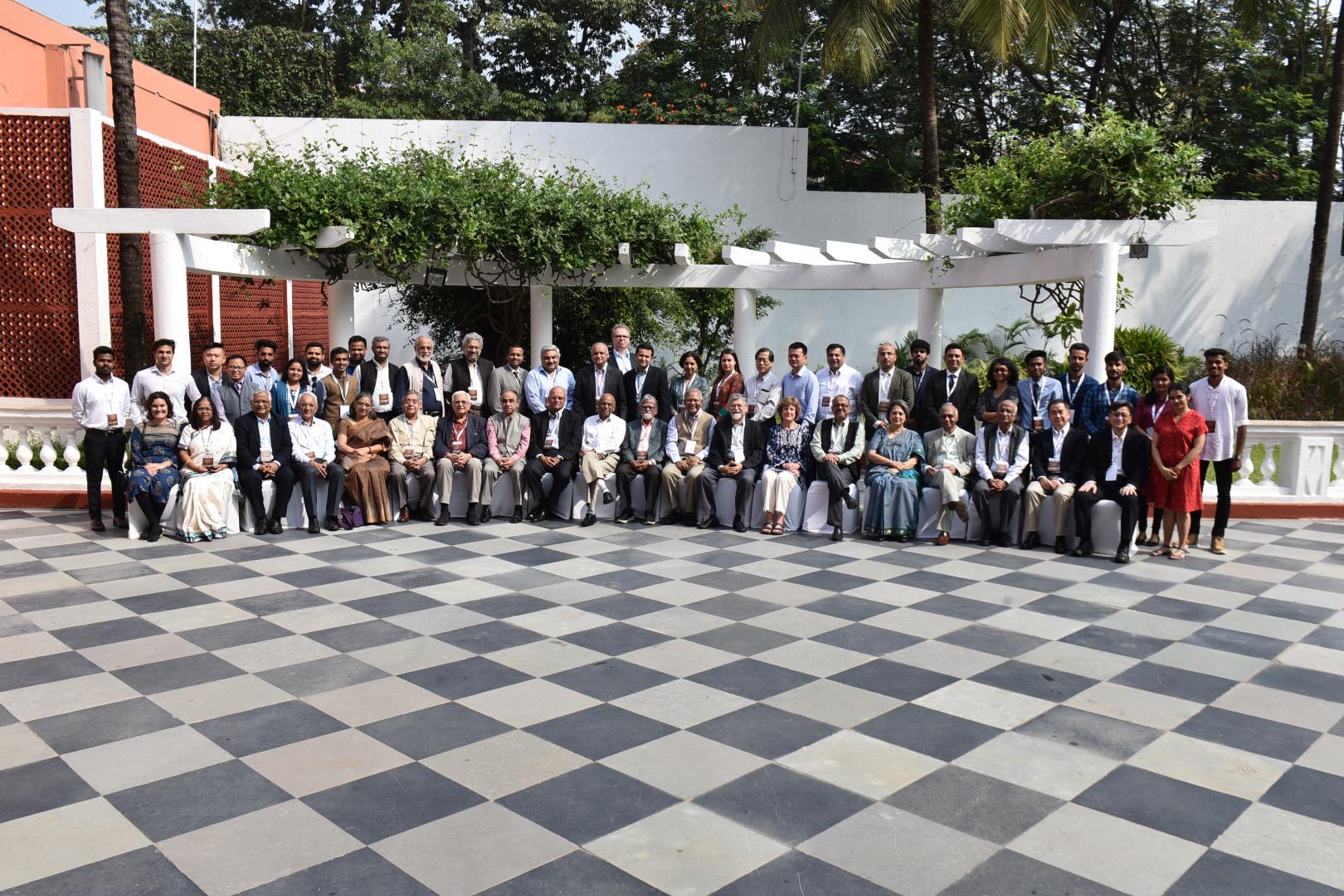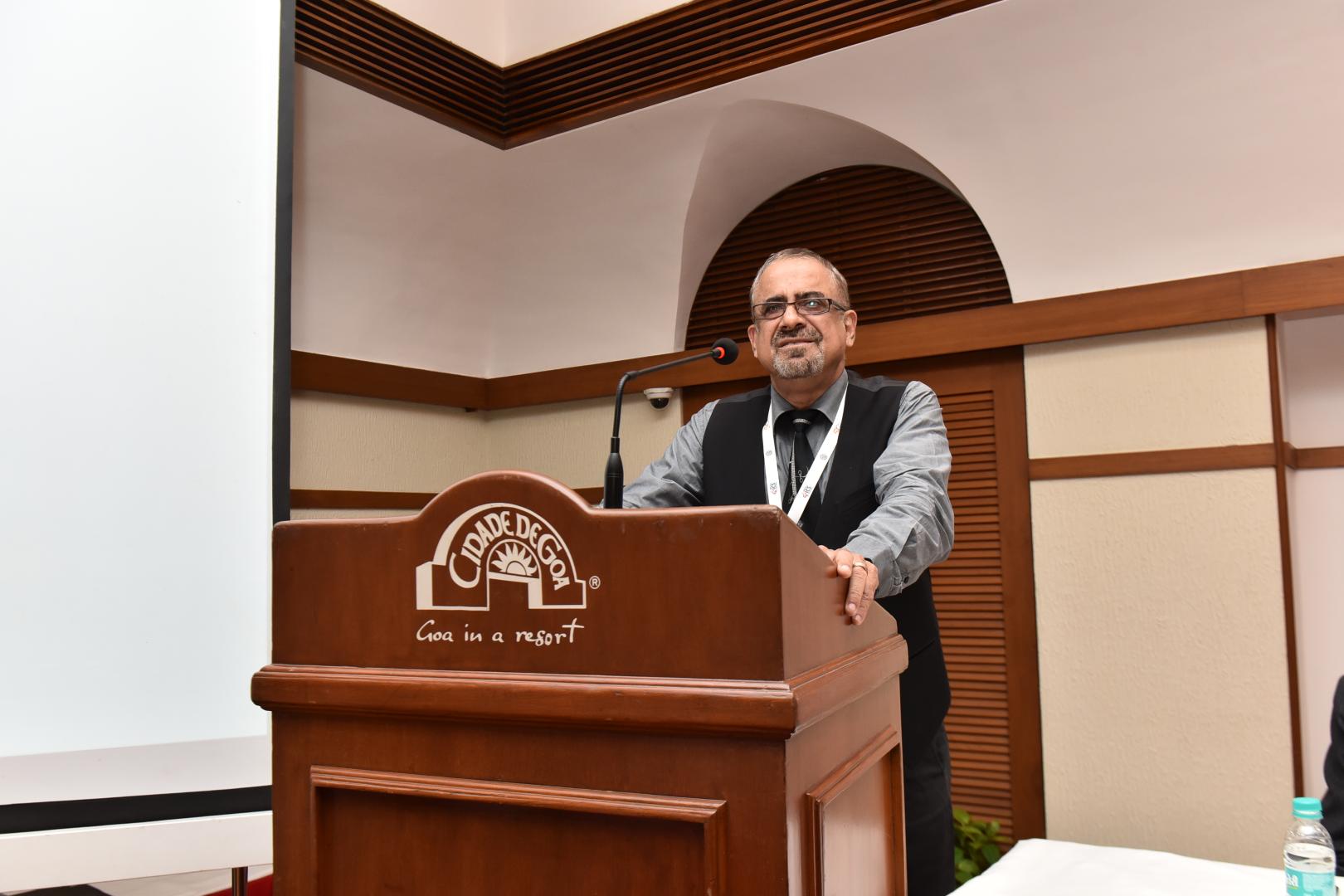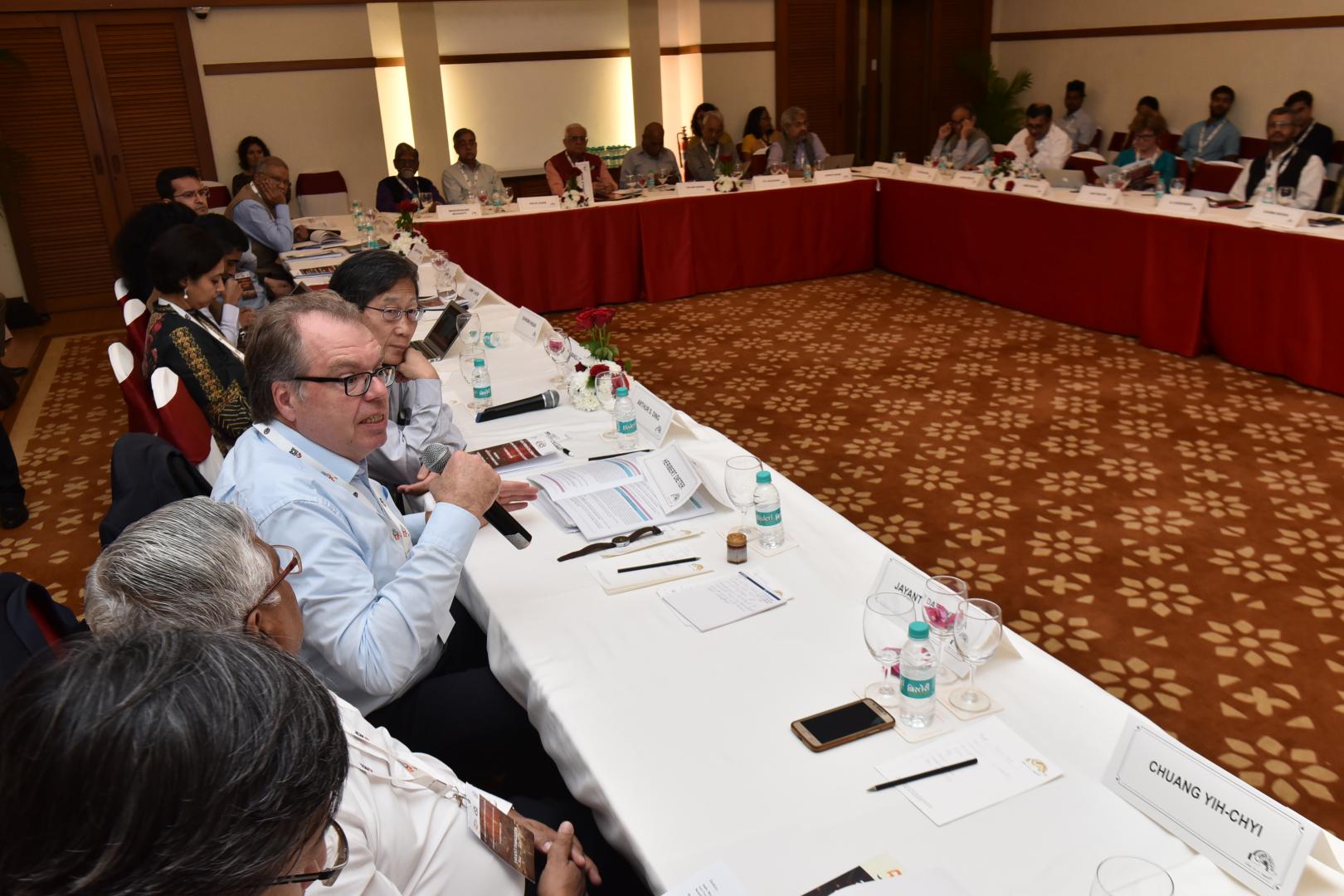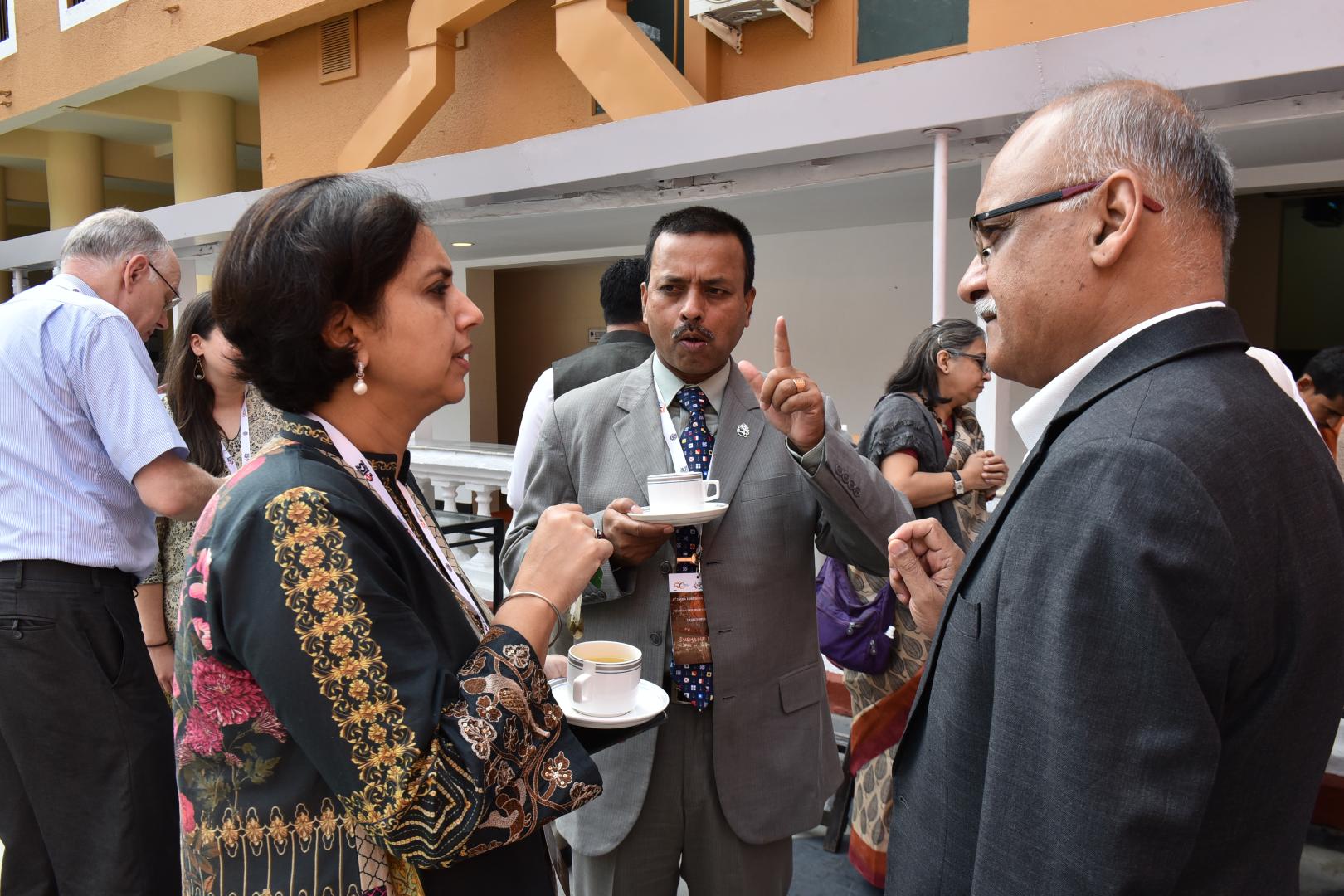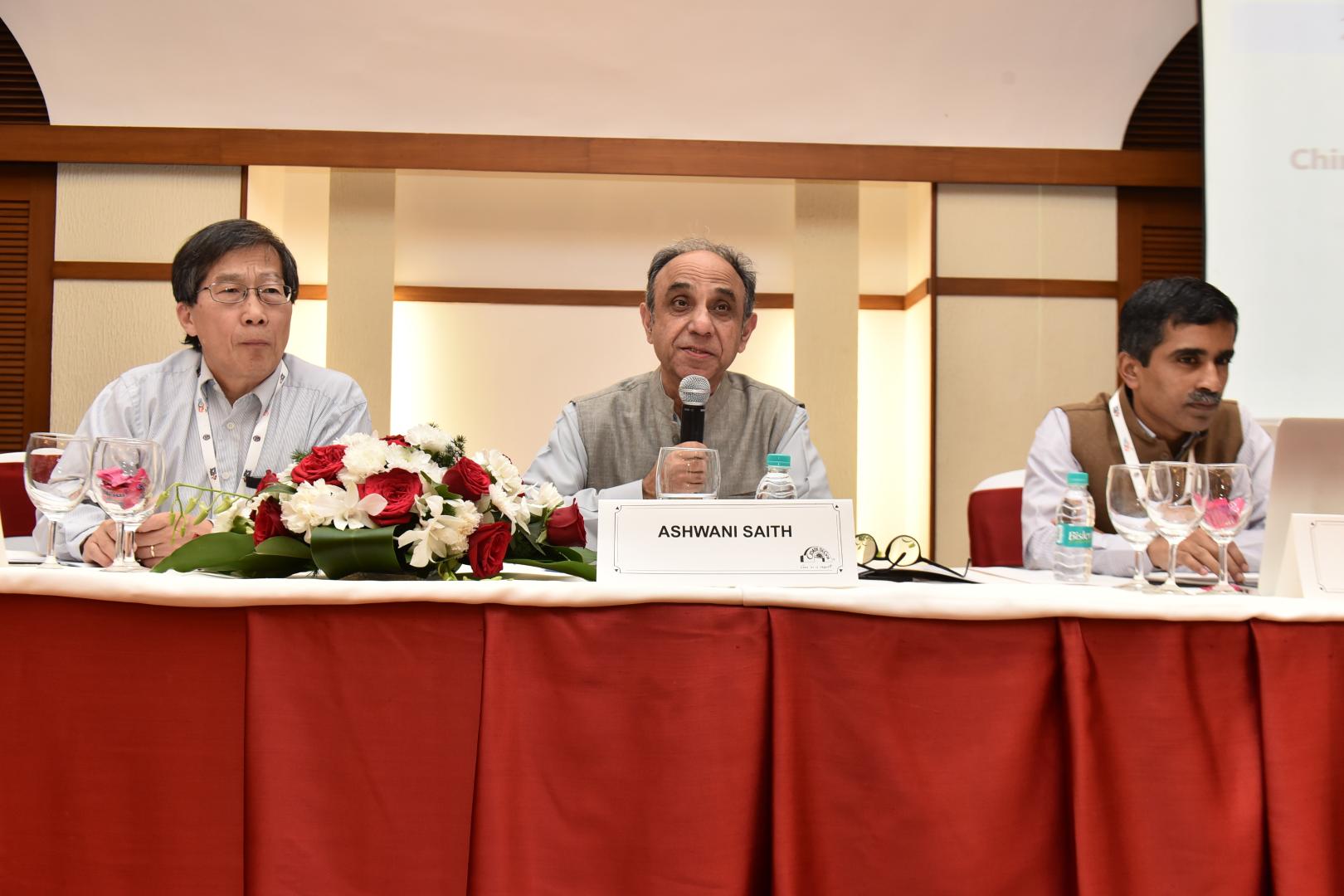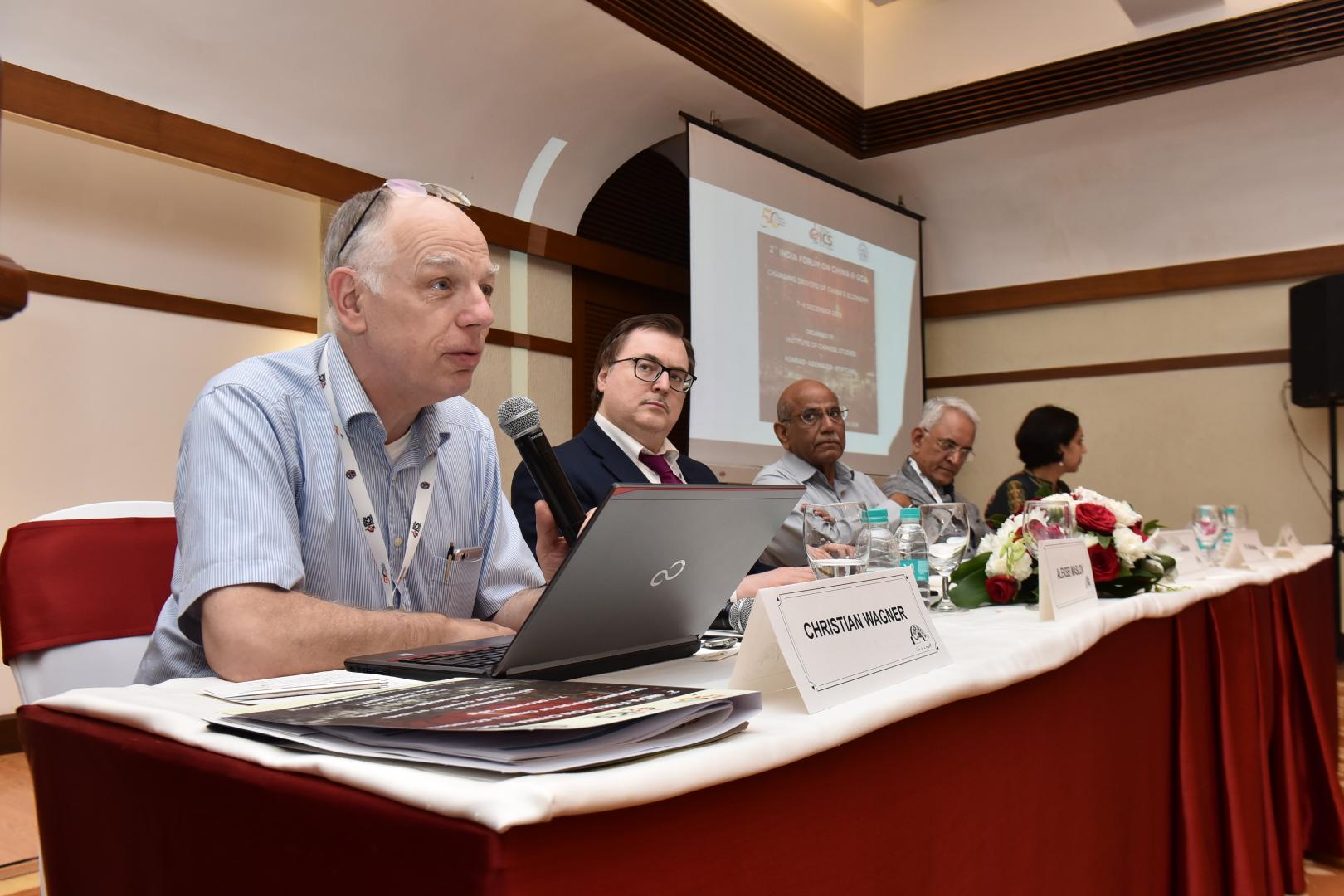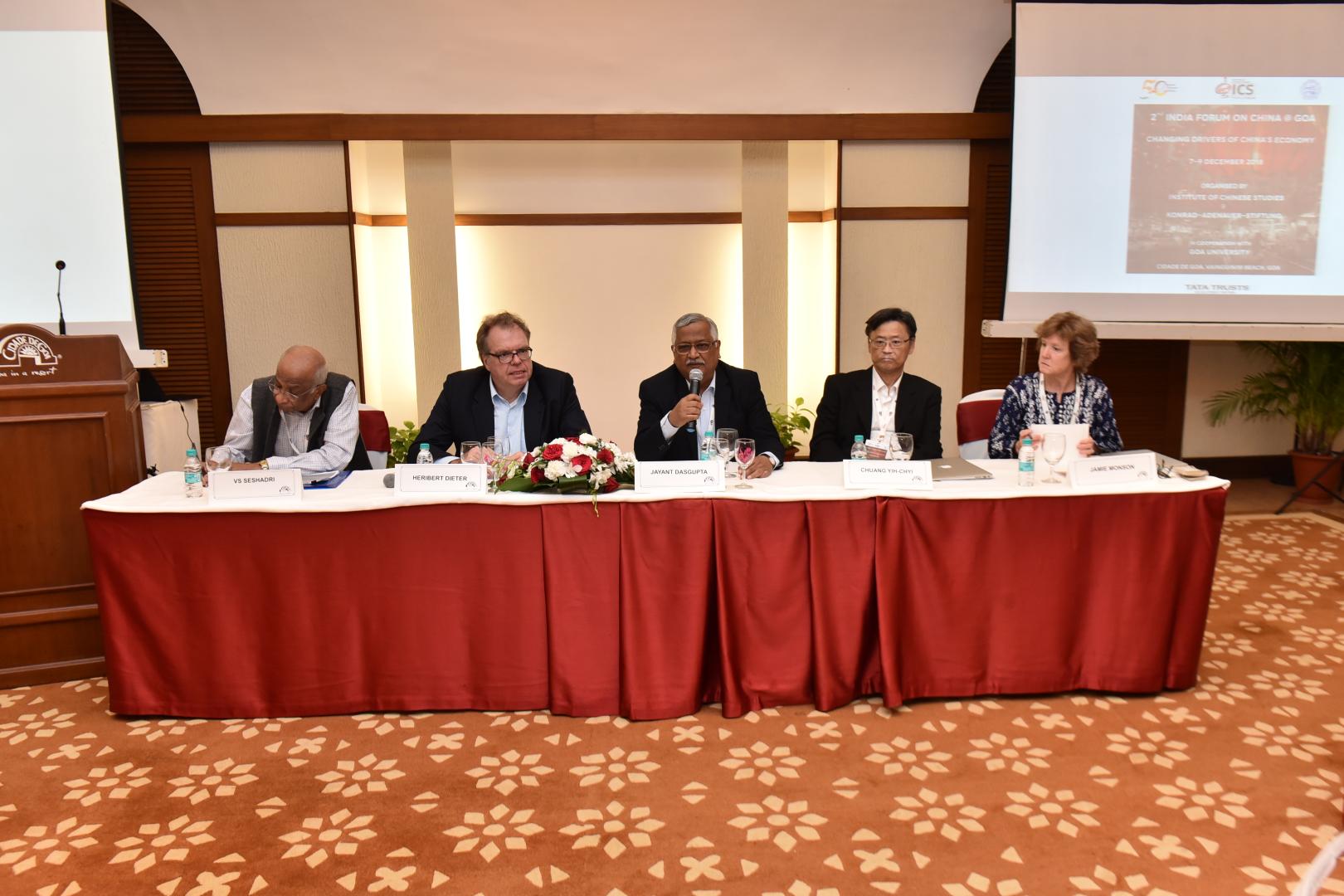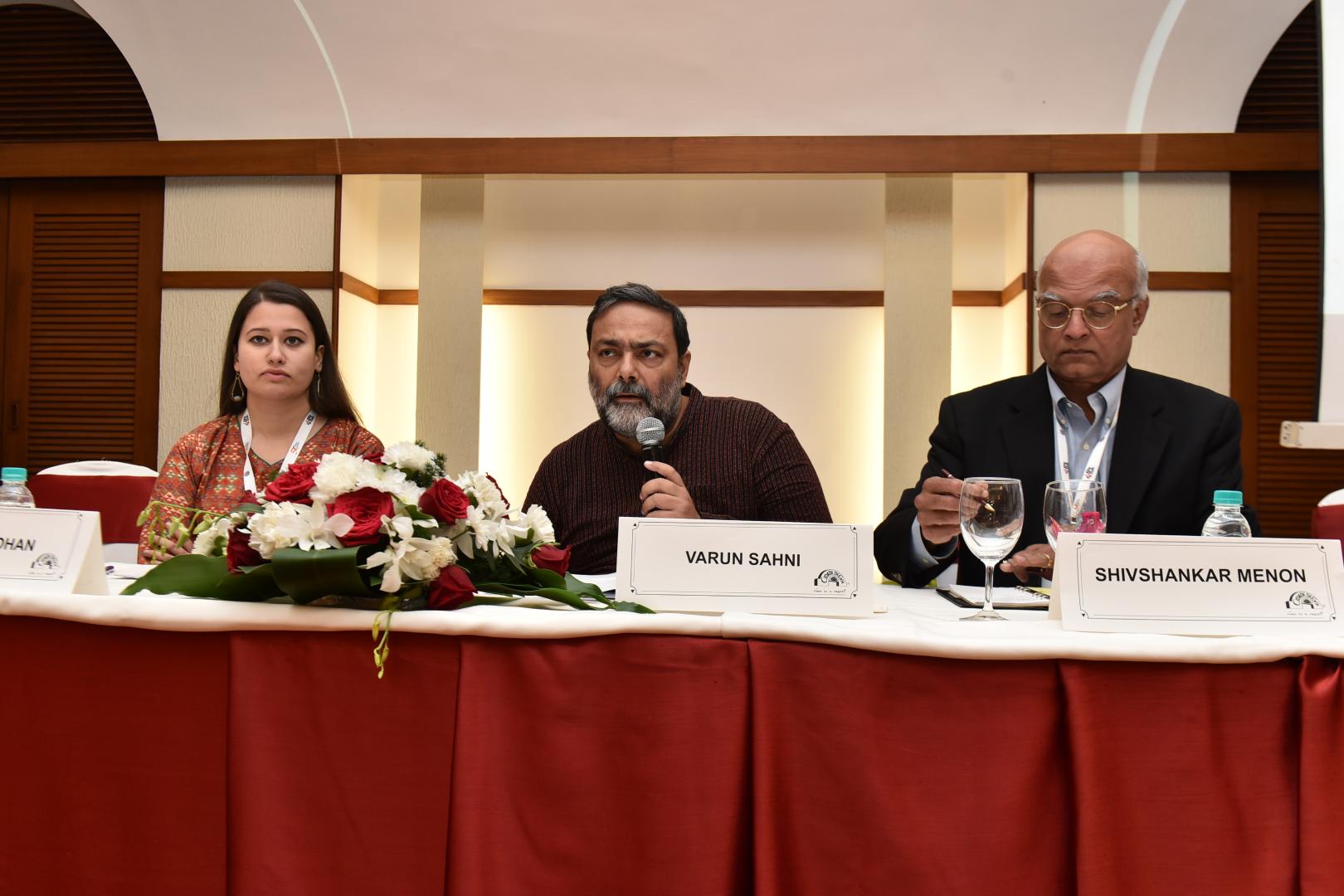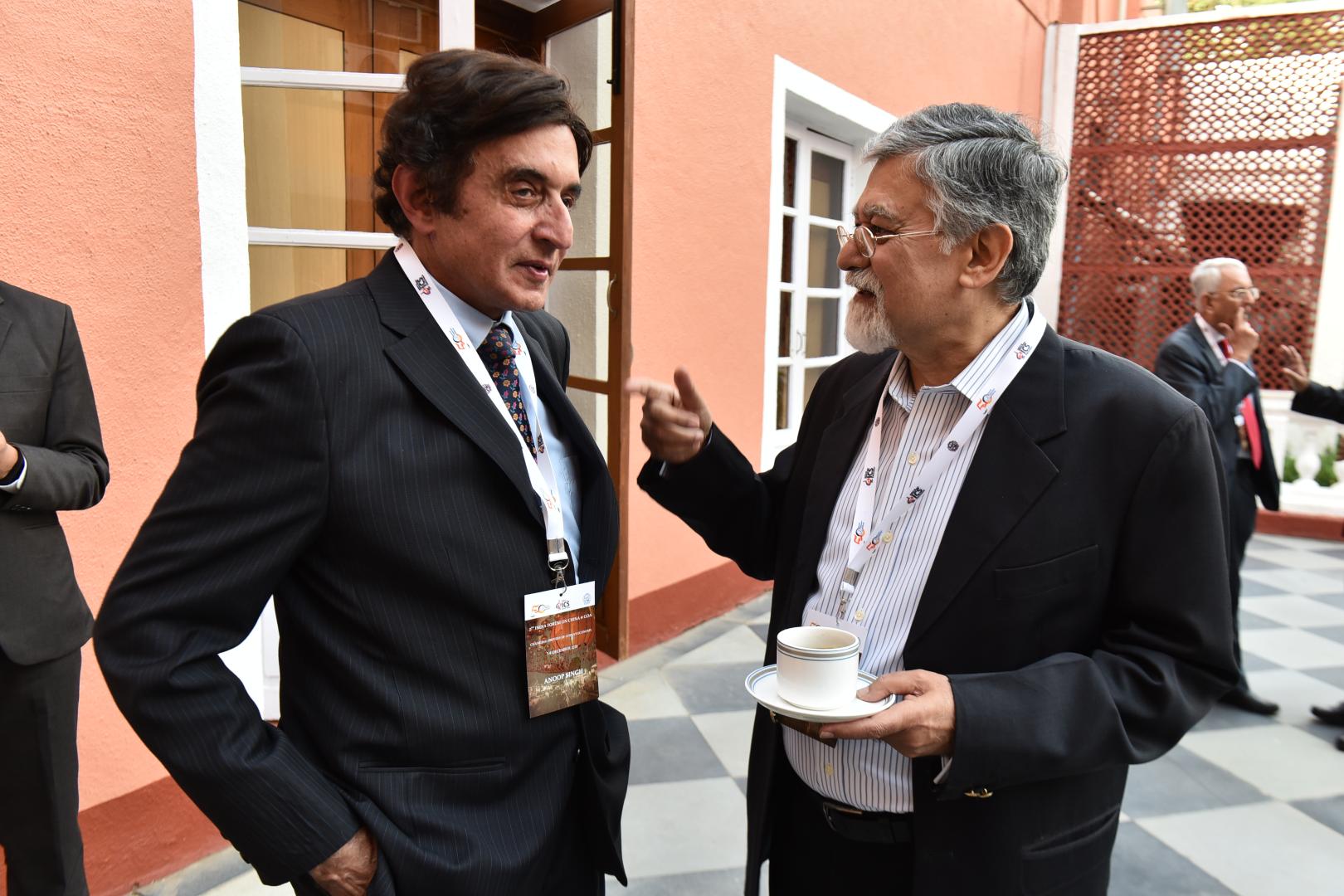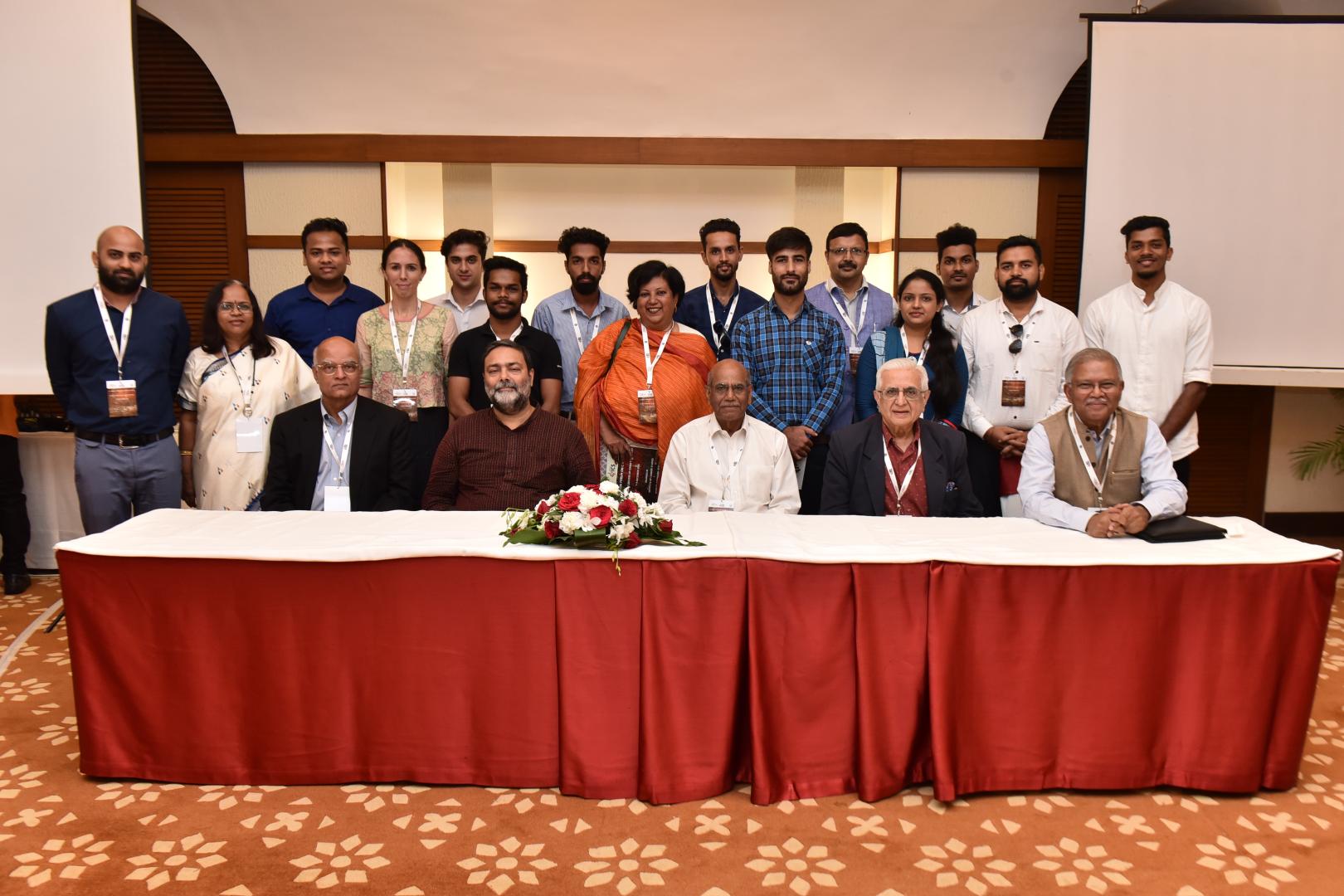2nd India Forum on China
The 2nd India Forum on China focused on ‘Changing Drivers of China’s Economy’. China’s economic growth has long driven the global economy, boosted global trade and led to its strategic engagement with the world. Domestically, its development strategies boosted the largest number of people out of poverty ever in the world and transformed the lives of its 1.3 billion people.
Recognizing that emerging economies are prone to falling into the ‘middle-income trap’ as also understanding the perils of continued fast-paced growth on sustainability of the development process, China has embarked on a determined program for structural rebalancing for orderly and managed deceleration since 2013. To study the contours of this evolving scenario and determine its outcomes for the world and India, the 2nd IFC in Goa looked at four broad sub-thematic issues of relevance for India and the world under the rubric of ‘Changing Drivers of China’s Economy. [Source: https://www.icsin.org/india-forum-on-china].
In the inaugural session, Ambassador Ashok Kantha explained that the forum had found its home in Goa. China’s rising influence in the region would be going hand in hand with continuous emergence of major concerns. These would be in need of further observation. Furthermore, he pointed to the decisive shift Indo-US relations were undergoing in the last year. Pankaj Madan of KAS India office, elborated on the fact that German companies were facing obstacles to enter Chinese markets and that Germany had started to look closer at Chinese economic and political developments. What is more, the ongoing trade war between China and the US was about to have a worldwide impact.
In his keynote address, Professor Ashwani Saith from the International Institute of Social Studies at the Erasmus University in Rotterdam, described the questions that were raised in China from 1949 - 1978: “How do you develop countryside? How can countryside contribute to industrial growth?” Further, China’s population was more homogenous than India’s. China’s development in areas such as human development, industry, farmers’ education, class and health system in 1978 laid the ground for the country’s rapid economic development. On the other hand, India’s farmers suffered painful deprivations because of their non-absorption in the Indian system. Regarding the Belt and Road Initiative (BRI), Saith added that while rights were being controlled in the BRI project, BRI also demonstrated functioning international relations. He mentioned that there was a risk involved for China from the BRI projects, too. If BRI projects went wrong, the rest of the world would suffer from Chinese failures. Professor Varun Sahni, Vice-Chancellor at Goa University, added that overall questions were related to: “What is China doing? and What are the implications for other countries?” He elaborated on the fact that given the interest and importance of China for the region, Goa University was thinking of implementing a Chinese Studies course, which would show China’s huge impact globally and also on academia.
In the first session “Structural Rebalancing of China’s Economy”, parameters defined by Chinese President Xi Jinping in order to rebalance China’s economy structurally were discussed. Main focus were the dimensions of the rebalancing project shifting from external growth drivers to domestic ones and from less reliance on investments to a greater focus of domestic consumption. Professor Manoranjan Mohanty, Honorary Fellow and Former Chairperson at the Institute of Chinese Studies, put forth the hypothesis that Xi Jinping would not overcome the success trap. He pointed out Chinese society as one of the most inequalitarian one with a huge gender disparity. What is more, China was one of the largest emitters of greenhouse gases. At the moment, Xi Jinping’s main focus consisted of a nationalist mobilization and an increase of domestic demand to make this sector the driver of growth instead of foreign investments. Professor Chen Zhiwu, Director of the Asia Global Institute, added that private household consumptions as part of the Chinese GDP were declining while government expenses were increasing. Furthermore, the imbalance and structural issues would persist if no fundamental system changes would occur in the future. Dr. Arvind Virmani, President of the Forum for Strategic Initiative, added further that China was totally unsustainable in its domestic market.
China’s determined focus on attaining global leadership in innovation, science and technology, and research and development is aimed at strategically developing and commercialising its advanced technology engagement. The next session “Xi Jinping’s Innovation-Driven Development Strategy” considered initially the question whether the advance of science and technology in China was based on special Chinese features. Professor Krishna Palepu, Harvard Business School Professor of Business Administration, explained that China would need to innovate in order to continue growing by that magnitude. In this context, technological innovation should not be merely focused on technology but the whole ecosystem of economic development. In addition, the majority of students graduating from Ivy League colleges were Chinese students - a guarantee for developing innovative approaches once returning back home to China. Ambassador Anil Wadhwa, Former Secretary (East) at the Ministry of External Affairs, elaborated on the ongoing trade war between the US and China, which escalated in June 2018. According to him, it should not go unnoticed when talking about China’s innovative goals that the country was developing facial-recognition-technologies on a largest scale. Lt Gen. Narasimhan, Director of the Centre for Contemporary Chinese Studies in the Ministry of External Affairs (MEA), addressed Chinese absorption of Western technology. Dr. Manoj Joshi, Distinguished Fellow at the Observer Research Foundation (ORF), explained how China aimed at making its military a particularly strong one. What is more, its goal was to undermine the US and put itself in the center of the geopolitical sphere. However, even the Financial Times had pointed out that Chinese economy needed reformation, otherwise it would stagnate. The current US administration under Trump would try to hold China more accountable - a new export control regime was being applied and the US was aiming at blocking Chinese growth in the autonomous vehicles’ sector.
In the following session on “China’s Economy in Transition: Sectoral and Spatial Dimensions”, Professor Anoop Singh, Member of the XV Finance Commission of India, described how Chinese debt growth had become slower but was still too fast. In addition, state-owned enterprises were rather inefficient in comparison to private sector companies in China. Income distribution was still bad in China and while the environmental sector was making progress as of now, it had not succeeded yet. To sum up, China would need to change from “high-speed” to “high-quality”. Dr. Jabin Jacob, Associate Editor at China Report, described how the pension level was problematic in China and needed to be dealt with on a subnational level. According to him, Chinese innovation was spread unequally looking at developments within Chinese provinces. However, provincial agency, initiatives by the central government and stimulated competition amongst the provinces existed.
In the session “Belt and Road Initiative in Europe and Eurasia”, Professor Aleksei Maslov, Director at the Faculty of World Economy and International Affairs at the School of Asian Studies in Moscow, explained that while Russia and China should form a stable alliance for “the sake of future humankind”, their views on many issues differed, e.g. Russia would see the BRI as Chinese concept, China would see it as a global concept. What is more, Russia would see a Great Eurasia around a Russia as the center while China would not give credence to an Eurasian concept at all. Dr. Christian Wagner, Senior Fellow at the German Institute for International and Security Affairs (SWP) explained from a European perspective that China was seen increasingly as political and economic challenge. This was different from five to six years ago where China was only seen as economic opportunity. The fact that Volkswagen was selling more cars in China than in Germany showed the importance of China for Germany. Within the framework of the new EU Strategy on India, the EU would like to enhance more connectivity with India. Additionally, the BRI project kept motivating the EU to try to increase cooperation with ASEAN states.
In the following panel “Unfolding Economic and Strategic Contestation”, Professor Dr. Heribert Dieter, Senior Associate at SWP, explained that the German mood towards China had changed. Nonetheless, the remaining core question would be: Is China’s state-led economy compatible with the culture of a global market economy? How stable is the Chinese economy? He added that Chinese credit growth would be immense and could lead to a financial crisis as it was “Ponzi” in nature. At the same time, the US, Japan and the EU were jointly putting pressure on China to show that while Trump’s language was not shared, his goals were.
In the valedictory session, Dr. Garima Mohan, Research Fellow at the Global Public Policy Institute (GPPI), addressed three key points: 1) Domestic challenges of China 2) External challenges 3) Takeaways for India. Regarding the domestic challenges, she elaborated that maintaining growth in China would be difficult given the inequalities described. The continuing dominance of state-led enterprises allowed a rather pessimistic outlook. At the same time, innovation was crucial for a continuous Chinese growth. Regarding the external challenges, some thoughts on the political dimension of the BRI were inevitable while more data and case studies were needed for an overall evaluation. It was crucial for India to figure out a mutually win-win concept for both China and India. In a possible next conference, looking into India’s relationship with Chinese provinces could be of major interest. Ambassador Shivshankar Menon, Former National Security Advisor and Foreign Secretary, explained that while China would seek primacy, everyone else was unsure whether it could deliver the global goods that everyone got used to. To conclude, he added that both China and India should build up a good crisis management since both were highly dependent on imports and both should share the interest in free navigation. However, from India’s point of view, disruption and uncertainties would also open up ground for new possibilities.
Provided by
Foundation Office India
About this series
The Konrad-Adenauer-Stiftung, its educational institutions, centres and foreign offices, offer several thousand events on various subjects each year. We provide up to date and exclusive reports on selected conferences, events and symposia at www.kas.de. In addition to a summary of the contents, you can also find additional material such as pictures, speeches, videos or audio clips.



